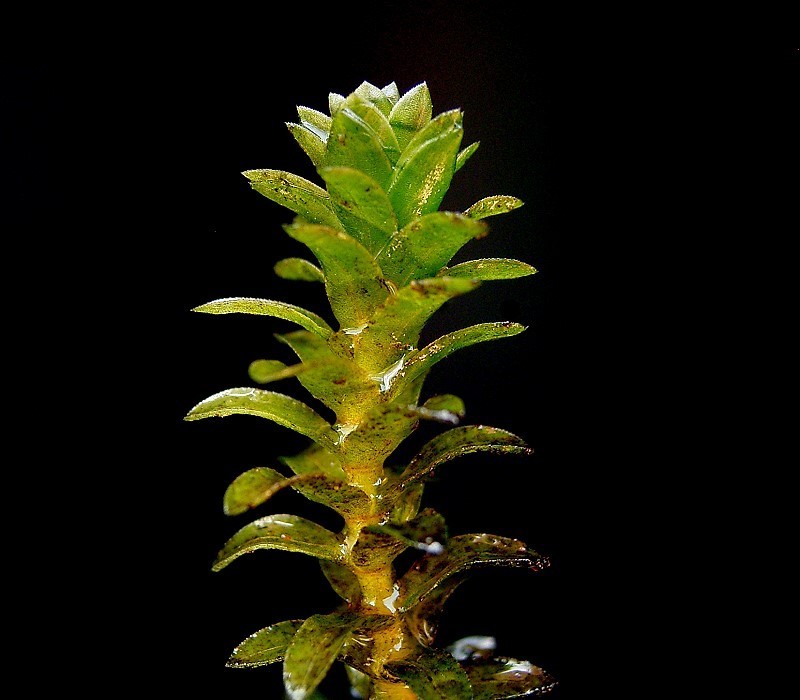
One wee fragment of it can flourish into a swath of green growing strands that entangles float planes and boat engines. Across the state, it has been found in 18 freshwater lakes and rivers. Many people decorate their fish aquariums with it.
It’s called Elodea.
Last week, the aquatic plant was a topic of discussion at the Alaska Invasive Species Workshop in Juneau. Researchers have traced the beginning of the invasive plant’s transmission around Alaska to people dumping out their aquariums into nearby lakes. An aggressive hitchhiker, Elodea will cling to float planes and spread further.
Tom Heutte, an aerial survey coordinator with the U.S. Fish & Wildlife Service, described one encounter in Cordova.
“We were flying along and one of our aerial surveyors looked out the window and sees a bunch of weeds stuck to the rudder of the float plane,” he said.
Elodea outcompetes native plants by blocking sunlight and degrades salmon habitat. The plant has been found from Fairbanks to Cordova, but not in Southeast. Heutte hopes that the region has avoided invasion.
He surveyed the float plane pond at Juneau’s airport for Elodea and found none. Heutte said that saltwater is a likely Elodea killer, one reason Southeast may have avoided the plant invasion. He also believes that lack of a road system, and difficulty of access to remote lakes, may have kept Elodea from spreading here. Over the next two years Heutte plans to survey lakes throughout the region in order to find out for certain.
It all begins with one plant fragment, he said.
Experts discovered a weapon against Elodea called fluridone. The herbicide disrupts Elodea’s capability to photosynthesize. It prohibits the plant’s ability to produce its own food, killing by starvation, yet harms few native plants. In some parts of Alaska scientists have completely eradicated Elodea with fluridone, said John Morton, supervisory fish and wildlife biologist at the Kenai National Wildlife Refuge.
Elodea is just one front in a battle against invasives.
“We are only at the beginning of the invasion curve for novel species,” Morton said.
You can learn more about invasive species on the Alaska Department of Fish & Game’s website.
